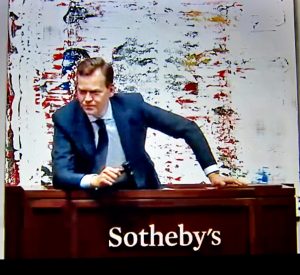
The World Leaders In Art Heritage & Legacy As Industry.
Visual Cultures in its present form as something to be seen in galleries as a popular past-time, archived in museums as heritage, supported by an assortment of institutions and individual scholars, purchased by patrons, collectors and commercial conglomerates, sold at auctions, and reproduced through mass-media is an invention of the modern era.
This recent practice has been functioning for two hundred years. Only when works of art circulates in this new system for visual culture, that they acquires a depth of meaning and an increase in value. In this short blog, I am describing the European Art World from the perspective of systems in a gigantic commercial industry, including not-for-profit organisations and government supported public art institutions.

Auction Houses
The major substances and adhesives that binds the Euro-Fine Art model together are Political, Economic, Cultural and Social factors.
Organised through complex relationships, the personnel functioning as gatekeepers, work and move freely across national borders and into art institutions, through networking and professional reputation.
They administrate and ultimately determine the value of artists and creative expressions. Starting with the frontline teams in no specific order, the system appears to be like this:
- Curators – academics – intellectuals – interpreters.
- Dealers & Traders – educators – risk takers – catalysts.
- Collectors – investors – philanthropists – hedge funds.
- Patrons – sponsors – trust – credibility.
- Funding Bodies – state commissions – municipal budgets – private donations.
- Museums – public & private, archives, block-buster exhibitions.
- Auction Houses – catalogers – bids – buy & sell.
- Commercial Galleries – sell – profits – shares.
- Critics – analysts – evaluate – aesthetics.
- Art Publications – inform – promote – inspire.
The procedures of commerce in Fine Arts are deliberate; public presentations, displays, discussions, agreements, distributions and sales. The context in which the art objects are promoted, seen and projected are conceptual, and will determine whether the subject and objects are accepted as art, or not. The commercial values for Fine Arts are achieved by what the collectors are prepared to pay for it.

Long before the products are presented to the general art public, and specific communities. The chosen themes, art objects, and the artists are placed through an institutionalised format and process.
There are usually a number of influential personalities functioning within the art systems, working closely with all gatekeepers of entry.
In the mix, big money pull strings and speak commandingly, above all else, survival is the order of the day. The institutions and organisations that are administrated by the gatekeepers, seems to have become much more important than the source, the creators of the art product.
The perception of Fine Art-Works are now perceived less on the known intentions of artists, and more on how the objects of art are positioned, and absorbed into the new systems of art as commerce and mega-industry.
I needed to thank you for this excellent read!! I definitely loved every little bit of it. Ive got you saved as a favorite to look at new stuff you postÖ